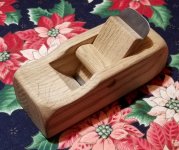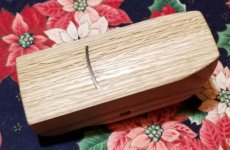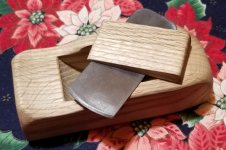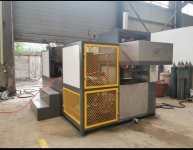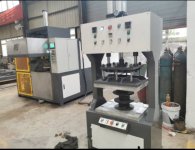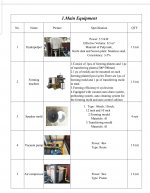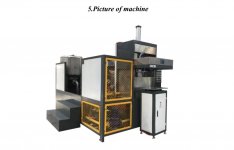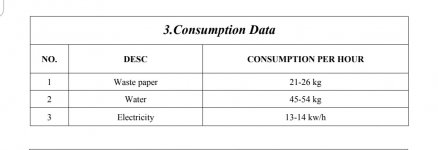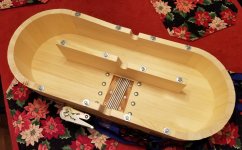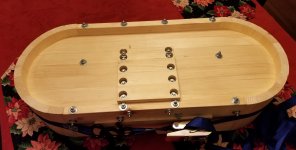Just try it and experiment doing it different ways, try different additives, etc.
In principle it "should work", cardboard for boxes is mechanically strong, designed for rough handling, should already have some of the "strength" additives.
Dyes and anti mold additives "in principle" do not affect sound so for expriments, not really needed.
What it will certainly lack is long fibers.
And don´t be surprised, cone makers ("any" paper makers?) tend to have personal "secret recipes".
Now if I could get the full recipe and processing needed for US Dollar bills paper, I might forget all this speaker obsession 😉
In principle it "should work", cardboard for boxes is mechanically strong, designed for rough handling, should already have some of the "strength" additives.
Dyes and anti mold additives "in principle" do not affect sound so for expriments, not really needed.
What it will certainly lack is long fibers.
And don´t be surprised, cone makers ("any" paper makers?) tend to have personal "secret recipes".
Now if I could get the full recipe and processing needed for US Dollar bills paper, I might forget all this speaker obsession 😉
As JMFahey said, you could certainly try it. Something to keep in mind is that mechanical properties will degrade each time the fibers are recycled. Some additives will not perform as intended when repulped.Hi can I use cardboard box pulp for making speaker cones or do I need to use virgin pulp
Last edited:
Crane Paper knows, but even asking would put you on a Watch List.full recipe and processing needed for US Dollar bills paper
The Chinese could certainly make US Money better than the US Mint. They been making paper a lot longer, and by-hand until pretty much today, with ALL sorts of fibers and spices and inks. The Chinese counterfeited the hologram on Windows 95 before MS got product to market.
The Iranians too.
At least older but still very valid US Dollars.
The Shah asked for the full process, including dedicated printing machines, same paper, etc. , to make his own bills "as good as US ones" and US Gov´t complied, he was too important an ally to say no.
Problem is that then the Iranian Islamic Revolution came, and they inherited the whole package.
At least older but still very valid US Dollars.
The Shah asked for the full process, including dedicated printing machines, same paper, etc. , to make his own bills "as good as US ones" and US Gov´t complied, he was too important an ally to say no.
Problem is that then the Iranian Islamic Revolution came, and they inherited the whole package.
Wonder why there is so little information on this 😉And don´t be surprised, cone makers ("any" paper makers?) tend to have personal "secret recipes".
Chemistry behind these things is a whole expertise on its own.
Which is also again a tango dance (no pun intended lol) vs the cone shape for stiffness vs cone breakup vs directivity.
Btw, little response on a comment about lowest frequency.
In theory this is around 82Hz, in practice this first harmonic is very low, since it physically doesn't fit in the length of the string.
It differs a little on the scale length as well as the thickness of the string how low and significant the first harmonic is.
I'm still working on this, in case anyone was wondering. Just very slowly 🙂.
Because I seem to like doing things the hard way, I decided to construct the tub out of wood without the use of any glues or sealants. In other words, similar to a wood bucket, barrel, or water tank. Commercial wooden beater tubs were made using similar methods. I'm using construction-grade 2x6 pine lumber (which, like many things I've used for this project, was just scrap I had 😉) that I cut down into clear 1x2 boards with quarter- or rift-sawn grain for better dimensional stability.
Most of the wood parts for the tub itself are finished now, but I still have a quite a bit to do before the beater can be used.
The most recent thing I've done is build a simple Krenov-style hollowing plane that I'll use to shape the inside of the tub staves. I made the plane iron (blade) out of a piece of an old circular saw blade and heat treated it myself using a simple box-of-dirt charcoal forge that I put together some time ago. Even though the iron is very thin (0.05in or 1.27mm), it actually cuts quite well with no chatter at all. Photos attached.
Because I seem to like doing things the hard way, I decided to construct the tub out of wood without the use of any glues or sealants. In other words, similar to a wood bucket, barrel, or water tank. Commercial wooden beater tubs were made using similar methods. I'm using construction-grade 2x6 pine lumber (which, like many things I've used for this project, was just scrap I had 😉) that I cut down into clear 1x2 boards with quarter- or rift-sawn grain for better dimensional stability.
Most of the wood parts for the tub itself are finished now, but I still have a quite a bit to do before the beater can be used.
The most recent thing I've done is build a simple Krenov-style hollowing plane that I'll use to shape the inside of the tub staves. I made the plane iron (blade) out of a piece of an old circular saw blade and heat treated it myself using a simple box-of-dirt charcoal forge that I put together some time ago. Even though the iron is very thin (0.05in or 1.27mm), it actually cuts quite well with no chatter at all. Photos attached.
Attachments
I have one machine making speaker cone paper I'm looking for premises cheap 3 phaseA LOT of investment in custom clamps, jigs, and molds.
Same process in Rusian:
One of the now-dead US factories had a room full of sample cones, coils, caps. A customer who wanted "a little of this and some of that" could have a sample made-up and playing in a few minutes.
No; and the one time I joined a specialty forum to ask, the forum crashed for weeks. So my lips are sealed.
I'm in uk I've got a speaker cone making machine and I'm looking for premises any???????Making cones requires specialized and expensive dies and machinery.
Absolute minimum, which is "acceptable", sort of, but only for dull woofers, unusable for Guitar, is a cone shaped fine screen/sieve , which you can turn in a lathe over a hardwood former, in those lathes which do not use a cutting tool but a polished iron ball at the end of an "oar", to push aluminum sheet metal into shape to make pots and pans.
It can turn a flat piece of glorified window screen into a cone shaped sieve.
Then you can pass very liquid cellulose paste suspension through it, water will go through and fiber will stay forming the cone, similar to handmade paper, then let air dry.
There are cones made that way, but they are too thick-heavy-soft-fluffy , have a characteristic "mountainous" back and are absolutely dull sounding.
Like I said, suitable only for woofers.
For Guitar you need way thinner and more rigid ones, let alone much lighter, so standard is to have male/female dies to press the original thick fluffy cone into a thin, strong and flexible one .... which are expensive
To boot, to rise production rate which otherwise would be abysmally slow is to attach overheated steam pipes to them so cone dries quickly, in seconds, and stays very compact and flexible.
Notice there are not too many cone factories worldwide, reason being they require quite an investment.
I have worked in an Argentine speaker cone Factory, basic process was same as this, my friend used an old house type bathtub to hold the paste, not kidding; it looks like "black dirty water", perfect for a Japanese Horror movie 😉
Interesting, exactly what machines you have?
A pulp mill?
A vacuum forming sieve?
A cone pressing steam press?
What kind of Mains (voltage/HP/single-3 phase) do you need?
I guess you are searching to rent some kind of Industrial building?
Rather than a Forum which is hit and miss, you should ask at some local Industrial real estate company, to see what they have available.
How many sq feet do you need?
Any special water/plumbing needs?
Check local zoning regulations.
A pulp mill?
A vacuum forming sieve?
A cone pressing steam press?
What kind of Mains (voltage/HP/single-3 phase) do you need?
I guess you are searching to rent some kind of Industrial building?
Rather than a Forum which is hit and miss, you should ask at some local Industrial real estate company, to see what they have available.
How many sq feet do you need?
Any special water/plumbing needs?
Check local zoning regulations.
Interesting, exactly what machines you have?
A pulp mill?
A vacuum forming sieve?
A cone pressing steam press?
What kind of Mains (voltage/HP/single-3 phase) do you need?
I guess you are searching to rent some kind of Industrial building?
Rather than a Forum which is hit and miss, you should ask at some local Industrial real estate company, to see what they have available.
How many sq feet do you need?
Any special water/plumbing needs?
Check local zoning regulations.
Attachments
That's the machine and the cone paper heater in the foreground
Attachments
IMPRESSIVE machinery!!! Congratulations!!!!
Again, you´ll have better luck asking straight at specialized Industrial Real Estate companies, many around.
Not impossible here, but iffy.
Best wishes for your future Commercial endeavours.
Plus you can rightfully use a prestige label on your products: "UK made cones!!!!"
Again, you´ll have better luck asking straight at specialized Industrial Real Estate companies, many around.
Not impossible here, but iffy.
Best wishes for your future Commercial endeavours.
Plus you can rightfully use a prestige label on your products: "UK made cones!!!!"
😊😊😊😊😊😊 in debt since I ventured into this machineryIMPRESSIVE machinery!!! Congratulations!!!!
Again, you´ll have better luck asking straight at specialized Industrial Real Estate companies, many around.
Not impossible here, but iffy.
Best wishes for your future Commercial endeavours.
Plus you can rightfully use a prestige label on your products: "UK made cones!!!!"
I'm fairly close to completing the beater tub now. I still have to fabricate the steel bands that will go around the staves (the ratchet strap shown in the photos is just for checking parts fit and to hold the staves in place temporarily). After that, I need to make the backfall and then the tub itself will be complete. See this for information about the parts of a typical Hollander beater and some details of how the commercial-sized ones were constructed circa 1900.
The internal dimensions of the tub are 25" L x 9.25" W (63.5 cm L x 23.5 cm W) with a depth of 4.625" (11.7 cm) at the back and 3.875" (9.8 cm) at the front. Maximum fill depth will be just over 3" (7.6 cm), which, based on some approximate calculations, should mean a water capacity of a little over 8 liters. The maximum practical stock consistency will probably be between 2.5-3.5%, so the machine should be able to process around 200-280 grams of fiber (dry mass) per batch. Should be enough for maybe 12-18 cones per batch of pulp, assuming some loss. Commercially available small beaters (that a small hand papermaking studio might use) start at about 3 times that capacity, but I think the smaller capacity is better suited to my application (at least for now).
All the interior surfaces of the tub (and most of the exterior ones as well) are planed rather than sanded for a simple reason: sanded wood gets rough and fuzzy when exposed to water, while planed wood does not.
The beater roll and motor (a 1/3 hp single phase induction motor salvaged from an old clothes dryer) will be carried in a pivoting yoke to allow variation of the clearance between the flybars and bedplate bars. I'm also planning to include a counterbalance system that will allow adjustment of the roll load (force exerted between the roll and plate) to regulate the intensity of the beating action. Most small fixed bedplate beaters don't have this feature, instead only offering a means of adjusting the minimum clearance. The Noble & Wood Cycle Beater is one example of a small(-ish) fixed bedplate experimental beater that does have a means of adjusting the roll load.
The internal dimensions of the tub are 25" L x 9.25" W (63.5 cm L x 23.5 cm W) with a depth of 4.625" (11.7 cm) at the back and 3.875" (9.8 cm) at the front. Maximum fill depth will be just over 3" (7.6 cm), which, based on some approximate calculations, should mean a water capacity of a little over 8 liters. The maximum practical stock consistency will probably be between 2.5-3.5%, so the machine should be able to process around 200-280 grams of fiber (dry mass) per batch. Should be enough for maybe 12-18 cones per batch of pulp, assuming some loss. Commercially available small beaters (that a small hand papermaking studio might use) start at about 3 times that capacity, but I think the smaller capacity is better suited to my application (at least for now).
All the interior surfaces of the tub (and most of the exterior ones as well) are planed rather than sanded for a simple reason: sanded wood gets rough and fuzzy when exposed to water, while planed wood does not.
The beater roll and motor (a 1/3 hp single phase induction motor salvaged from an old clothes dryer) will be carried in a pivoting yoke to allow variation of the clearance between the flybars and bedplate bars. I'm also planning to include a counterbalance system that will allow adjustment of the roll load (force exerted between the roll and plate) to regulate the intensity of the beating action. Most small fixed bedplate beaters don't have this feature, instead only offering a means of adjusting the minimum clearance. The Noble & Wood Cycle Beater is one example of a small(-ish) fixed bedplate experimental beater that does have a means of adjusting the roll load.
Attachments
Last edited:
- Home
- Live Sound
- Instruments and Amps
- Guitar speaker cone profiles
